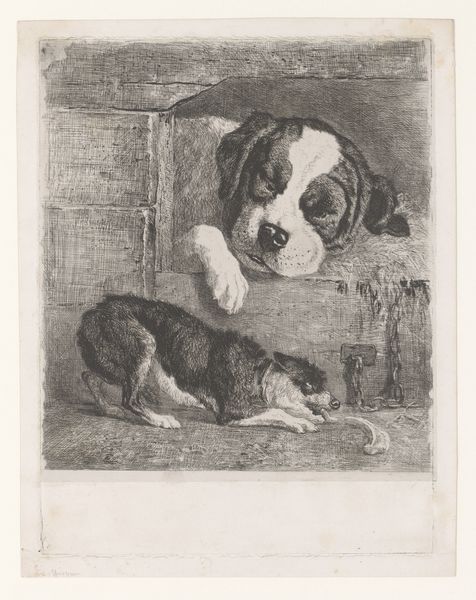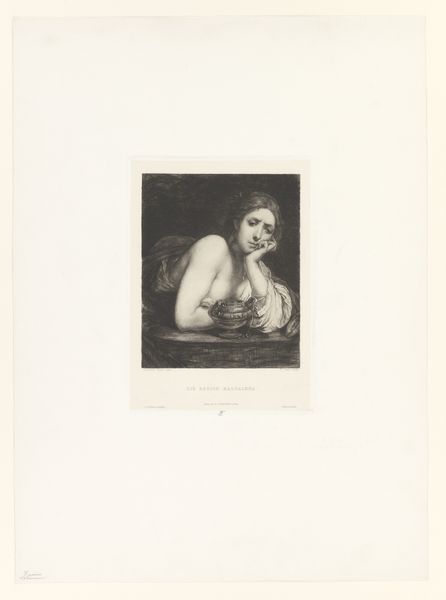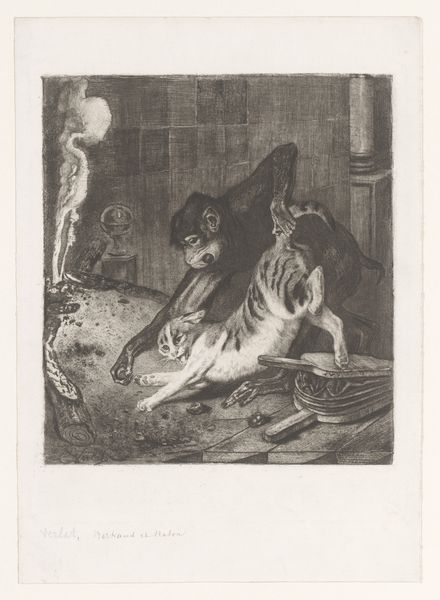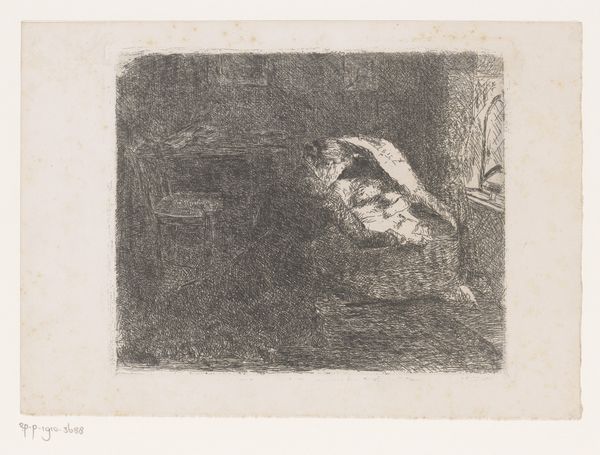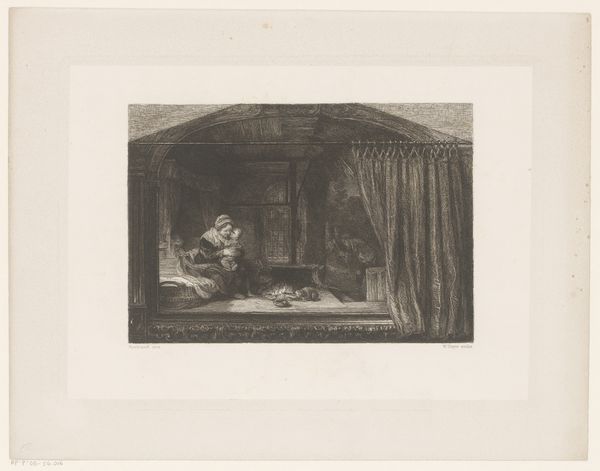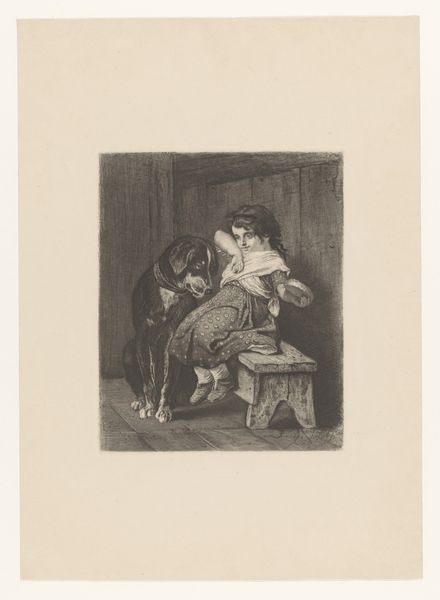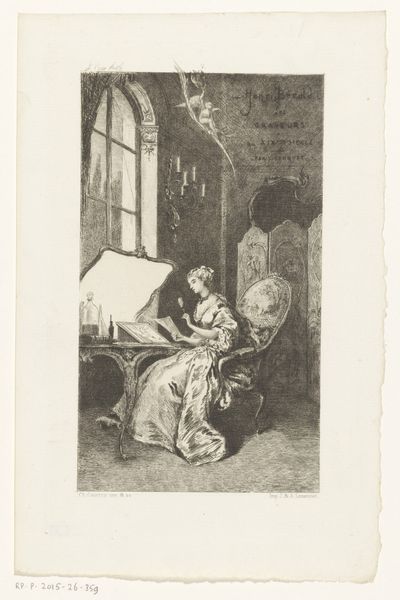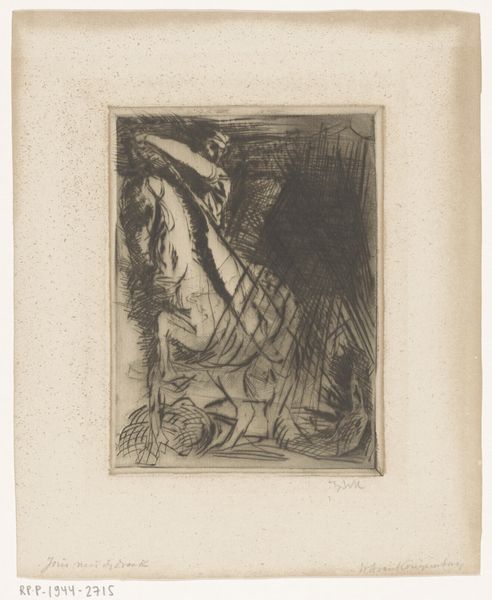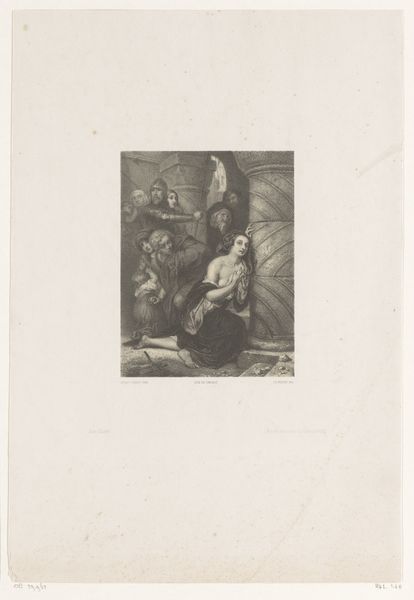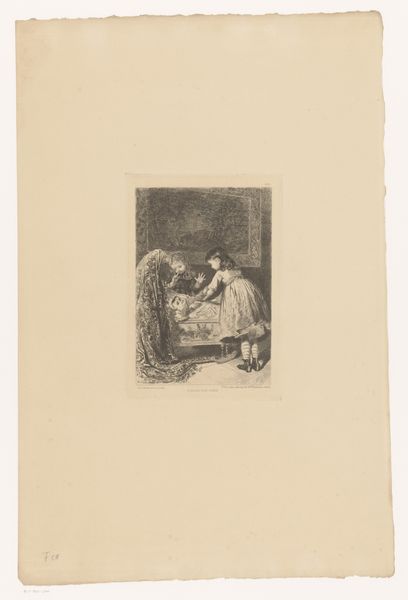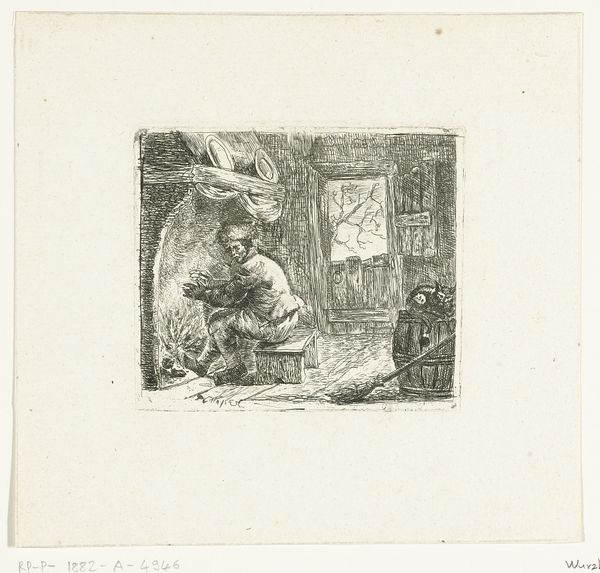
drawing, print, etching
#
pencil drawn
#
drawing
#
animal
# print
#
etching
#
dog
#
pencil drawing
#
genre-painting
#
realism
Dimensions: height 280 mm, width 212 mm
Copyright: Rijks Museum: Open Domain
Curator: Charles Verlat created this etching, "Twee honden"—"Two Dogs"—sometime between 1834 and 1890. Editor: There's a melancholic feeling to the whole scene. The contrast in textures, especially the dog’s fur, adds depth to the overall composition. It pulls the eye. Curator: The piece offers a glimpse into 19th-century attitudes toward domestic animals, particularly dogs. There's a sentimentality here, certainly. This etching captures not just the likeness of the animals, but also an intimacy between humans and their companions, reflecting changing social structures of the time where pets became increasingly integrated into family life and became signifiers of certain class belongings. Editor: The linear quality is definitely important here. Look how Verlat used lines to define form and shadow, creating a rich sense of texture and tonal variation. The light is very intriguing! It gives the scene an evocative quality. It's more than just representation; it is a modulation of form and atmosphere through a command of etching techniques. Curator: I agree, and I see in the languid pose of the dog with the bone a depiction of domesticity and companionship that challenges traditional representations of animals in art, usually reserved for hunting scenes. The artwork then participates in a discourse on middle-class values, gentrification, and sentimental connections to the non-human world. Editor: Perhaps. For me it’s primarily the formal balance of the piece and the meticulous crafting that evokes its success. It’s about Verlat’s attention to detail, to light, shade and texture which contributes so deeply to the mood. It is essentially a tonal study executed with such mastery. Curator: Understanding it through technique is valid, but recognizing the social currents shaping such imagery illuminates its full impact on our understanding of history. Editor: In that case, let's simply agree it’s a thought-provoking piece regardless of the path we choose to interpret it from.
Comments
No comments
Be the first to comment and join the conversation on the ultimate creative platform.
